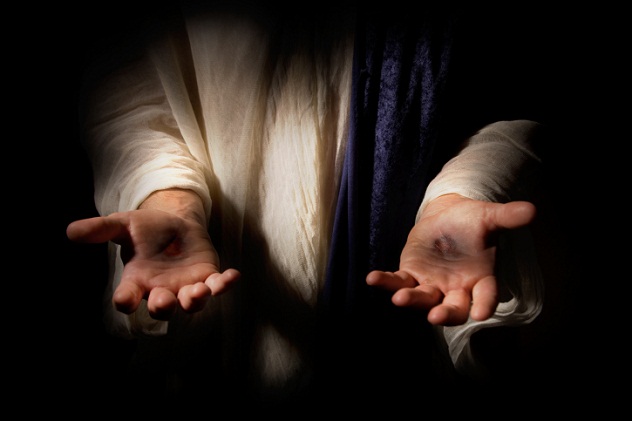 Politics
Politics  Politics
Politics  Weird Stuff
Weird Stuff Ten Bizarre Facts About The Doge Meme
 Our World
Our World 10 Ways Your Christmas Tree Is More Lit Than You Think
 Movies and TV
Movies and TV The 10 Coolest Stars to Set Sail on The Love Boat
 History
History 10 Things You Didn’t Know About the American National Anthem
 Technology
Technology Top 10 Everyday Tech Buzzwords That Hide a Darker Past
 Humans
Humans 10 Everyday Human Behaviors That Are Actually Survival Instincts
 Animals
Animals 10 Animals That Humiliated and Harmed Historical Leaders
 History
History 10 Most Influential Protests in Modern History
 Creepy
Creepy 10 More Representations of Death from Myth, Legend, and Folktale
 Politics
Politics 10 Political Scandals That Sent Crowds Into the Streets
 Weird Stuff
Weird Stuff Ten Bizarre Facts About The Doge Meme
 Our World
Our World 10 Ways Your Christmas Tree Is More Lit Than You Think
Who's Behind Listverse?

Jamie Frater
Head Editor
Jamie founded Listverse due to an insatiable desire to share fascinating, obscure, and bizarre facts. He has been a guest speaker on numerous national radio and television stations and is a five time published author.
More About Us Movies and TV
Movies and TV The 10 Coolest Stars to Set Sail on The Love Boat
 History
History 10 Things You Didn’t Know About the American National Anthem
 Technology
Technology Top 10 Everyday Tech Buzzwords That Hide a Darker Past
 Humans
Humans 10 Everyday Human Behaviors That Are Actually Survival Instincts
 Animals
Animals 10 Animals That Humiliated and Harmed Historical Leaders
 History
History 10 Most Influential Protests in Modern History
 Creepy
Creepy 10 More Representations of Death from Myth, Legend, and Folktale
9 True Things You Never Knew About The Life Of Jesus
He never held a political office, yet he’s the most famous person in history. Whether you think Jesus was the son of God comes down to faith, but there are aspects of his life that are undeniable and misremembered today.
9 AD Didn’t Always Stand For Anno Domini

Dionysius Exiguus wasn’t too thrilled that he was living in the year 240 AD. A devout Catholic, Dionysius knew that the AD stood for Anno Diocletiani, in reference to Roman emperor Diocletian. He is largely forgotten today, but if he is recalled, it’s for his relentless torture of Christians. After some careful study, Dionysus proposed renaming the AD Anno Domini—“in the year of our lord.” Dionysius counted Easters to come up with what he believed to be the birth year of Jesus—more on this later—and assigned that year as 1 AD.
The last AD for Diocletian was 247. The following year, based on Dionysius calculations, was 532 Anno Domini, which meant it had been 532 years since Jesus was born. The system wasn’t implemented globally for almost 200 years, when Charlemagne came to power in the eighth century AD.
8 Jesus Wasn’t Born In 1 AD

Dionysius never fully explained how he determined the birth year of Jesus, but he partially used an Easter table. It’s about what it sounds like it would be—a listing of Easters, or anniversaries of the death of Jesus. His numbering wasn’t half-bad, but it wasn’t accurate, either.
The Bible offers clues to the birth year of Jesus based on the references to the rulers of the time. For example, John The Baptist began his preaching in the 15th year of Tiberius Caesar’s reign. Tiberius succeeded Augustus Caesar in 14 AD, which would mean it was approximately 29 AD. John The Baptist was six months older than Jesus, and Jesus began his preaching when he was “about 30,” so Jesus was born around 3–2 BC at the latest. Even Pope Benedict XVI believed 1 AD wasn’t accurate. The former Pope estimated Jesus’ birth at 7–2 BC.
7 There Probably Was A Star Of Bethlehem

You know the story—a bright star appeared in the sky the night Jesus was born. Magi took it as a sign and followed it. It’s known as the Star of Bethlehem, and it’s a documented occurrence. A triple-conjunction of Saturn and Jupiter occurred in 7 BC in the constellation of Pisces. That would be bright enough—and uncommon enough—to attract stargazers (or wise men) to follow it.
There are other documented occurrences that connect the details of the nativity story with an astronomical event around this date. Chinese astronomers recorded a bright comet in the constellation of Capricorn in 5 BC as well as a new star in the northern constellation of Aquila the year before. There are plenty of things between 7–2 BC that could constitute a “Star of Bethlehem.”
6 Jesus Wasn’t Born December 25

If the birth of Jesus lines up with one of those astronomical sightings, we can safely assume it was not December 25. That was the day of Saturnalia, the winter festival, which the growing Christian Church liberated and that’s why we have Christmas in the winter. You probably knew that already—and now you know that’s probably bunk. Likewise, the feast of the Annunciation is March 25, which is the day Jesus was conceived in the Virgin Mary. Add nine months to that and you get a birthday of December 25. That’s a theory by William Tighe, and it’s not as farfetched as you may think—the first known Christmas on December 25 was in 336, but Tighe believes there are references back to 270 to a Christian celebration.
So when was Jesus really born? Around 200 AD, Clement of Alexandria affixed a birthday of May 20. That date coincides with the clues from the Bible, where shepherds are tending to their flocks, which they wouldn’t be doing in December due to the cold. Another theory places Jesus’ birth on September 11, 3 BC. Joseph Dumond proposes that the passage in Revelation 12:1–5 is a reference to Virgo and the 12 visible stars around it. Yet another theory places Jesus’ birth in April, on the 17th of 6 BC. That’s when Jupiter underwent an eclipse with the moon in Aries, which would’ve made for quite the bright object in the sky. The Romans even documented the instance on a coin. At the very least, the evidence definitively concludes that Jesus was born in Not December, BC.
5 Jesus’ Death Date Is Almost Certain

The Bible tells us exactly when Jesus died on the cross. Matthew 27 specifically says that Jesus died on a Friday during Passover. There are only two Friday Passover dates that fit into the given evidence, 30 AD and 33 AD. Nisan 14 in the Jewish calendar is our modern April 3, 33 AD. Other clues, the reigns of Tiberius Caesar and Pontius Pilate, make the 33 AD date more likely.
Another clue comes from Matthew 27, as well—an earthquake. After Jesus died, Matthew states “the earth quaked, and the rocks were rent,” and scientists did discover sediment deposits that point to an earthquake in Israel between 26 and 36 AD. That also explains the darkness that fell over the land after Jesus death—dust from the earthquake may have blackened out the skies.
4 Nazareth vs. Nazarene

Matthew states that Jesus came from Nazareth, so “that he shall be called a Nazarene.” That’s why Jesus is known as Jesus of Nazareth. There’s some disagreement about whether Nazareth really was a city during Jesus’ time, but a Nazarene is actually something a bit different. Nazarenes were a sect of Jews who were mentioned in the Dead Sea Scrolls and closely connected to the Essenes. The Essenes were a minority Jewish sect located in the Qumran community and did some things similarly to how Jesus lived his life. They practiced collective ownership, had a central leader, and did not swear to oaths against God. The two groups seem to overlap, and it’s safe to assume that you could be both an Essene and a Nazarene. This may have been what Matthew was referring to.
Another theory states that Nazarene isn’t a reference to Nazareth or the Nazarene sect, but a Greek translation of the Hebrew word for “branch.” According to proponents, the passage simply means that Jesus is fulfilling a prophecy of being a branch of past religious leaders.
3 Jesus Was Born In A House

The typical nativity scene has baby Jesus, three wise men, lambs, and takes place in some sort of barn. There was, of course, no room at the inn, so they took to a place where animals are kept. Most homes were a sort of multilevel tier, with the bottom floor being a space for animals to be kept at night. Think of it as a barn on the bottom floor, with bedrooms on the top. The second floor would be almost like a loft, overlooking the animals below. Jesus likely was born on the bottom floor of a home in the area where animals were kept.
That leads us to the inn. There wasn’t a Ritz-Carlton in downtown Bethlehem. An inn would be a guest room at a home that may or may not be attached to the main house. Joseph and Mary were not going to a hotel, or a place you would pay someone to stay. They were traveling to a relative’s home and going to stay in the guest house, but that was full. Some friends were probably already there, so they just crashed in the lower-floor barn.
A manger was a basically a trough, only a bit shorter. It would be common to find one on the first floor of a home for animals to feed from at night. It would be a bit bigger than a newborn, depending on the baby. To place a baby in a manger makes a lot of sense—it’s built like a crib and will keep the baby secure. Outside of the faith part of Jesus birth, there’s nothing out of the ordinary about it. Most babies were born similarly in those times.
2 Killing In The Name

We all know the story of Herod. Wise men traveled from the East, following a star that they thought proclaimed a great leader. They stopped to visit Herod, the ruler of Judea, to ask about the child—and Herod reasonably decides to kill every firstborn male child under age two. It’s disturbing and crazy. There’s no way that could have actually happened, right?
This one is a bit tricky. There is no proof of a mass slaughter of babies in Bethlehem, but there is evidence that it would not be out of the ordinary for Herod to do such a thing.
Herod was nuts. He killed pretty much whoever he wanted, including three of his sons. He was a paranoid at best, which even Josephus documented. Killing every male infant in a small town wasn’t exactly out of the question.
How many children are we talking about? 3,000? 14,000? How about 300? Not 300 children, but a total population of 300 in Bethlehem between 7 BC and 1 AD. If the population was entirely married couples all making babies, they would produce 150 children, about half of whom would be male. Realistically, we’re talking about maybe 10 male children, tops. Given all the horrible things Herod did, killing 10 peasant children in a nothing town wouldn’t even trend on Twitter. There’s no scientific or written proof the slaughter of innocents happened, but there’s no proof that it didn’t. It’s worth noting that the Book of James mentions the slaughter, but that was written around 145 AD and easily could have used the books of Matthew and Luke as a source.
1 Jesus Really Existed

Earlier, we mentioned the historicity of Jesus, which is the historical record of Jesus’ life. There are a scant few sources outside the Bible that mention Jesus. The most well known are those of Flavius Josephus, who mentions Jesus twice. Josephus wrote those about 60 years after the death of Jesus, but there’s a mention of Jesus prior to that.
Mara Bar-Serapion wrote a letter of hope to his son during a time when Mara was imprisoned by the Romans. In the letter, he reminds his son of three historical figures who were treated poorly by their own people:
“What else can we say, when the wise are forcibly dragged off by tyrants, their wisdom is captured by insults, and their minds are oppressed and without defense? What advantage did the Athenians gain from murdering Socrates? Famine and plague came upon them as a punishment for their crime. What advantage did the men of Samos gain from burning Pythagoras? In a moment their land was covered with sand. What advantage did the Jews gain from executing their wise king? It was just after that their kingdom was abolished. God justly avenged these three wise men: the Athenians died of hunger; the Samians were overwhelmed by the sea and the Jews, desolate and driven from their own kingdom, live in complete dispersion. But Socrates is not dead, because of Plato; neither is Pythagoras, because of the statue of Juno; nor is the wise king, because of the ‘new law’ he laid down”
The prevailing thought by historians is the letter was written in 73 AD. Given the nonchalant passing mention of the “Wise King” that most agree is a reference to Jesus, it seems that the existence of Jesus was common knowledge 40 years after his death. If the letter was written in 73 AD, it would predate Josephus’s references by approximately 20 years. That would make the Mara Bar-Serapion letter the earliest non-biblical reference to Jesus.
Ultimately, the divinity of Jesus comes down to faith, and there is no golden ticket that will make someone believe or not believe. There is, however, no doubt that Jesus lived.
Jake wrote a trivia e-book filled with crazy stuff like the kind you just read in this list. You can follow him on Twitter for more useless facts.








